With only the moon lighting my path I stealthily manoeuvred my way through the dense stands of brambles and nettles, eventually finding myself at the water’s edge. It wasn’t long dark and the air was fresh and humid after a recent downpour which had, in turn, brought out the swarms of mosquitoes that inhabit the banks of this small, untapped and truly exciting little river.
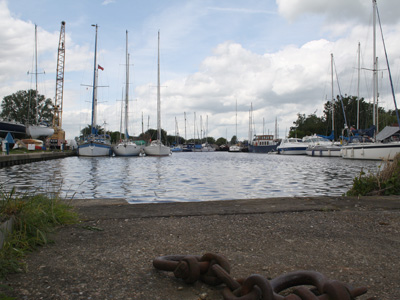 It was June 15, that magical date when I can enjoy the build-up and excitement of a midnight start as the river close season finally comes to an end. With my rods already rigged up and baited it was simply a question of unfolding my bedchair and putting on the kettle as I waited in anticipation of what the start of the season would bring. It would have been so easy to flick the rods out before midnight but that’s not what it’s about so as the time approached 11.55 I double checked my rigs before looking out over my spot only to see a plume of bubbles break the surface with an overwhelming feeling surrounding me that only this special moment brings.
It was June 15, that magical date when I can enjoy the build-up and excitement of a midnight start as the river close season finally comes to an end. With my rods already rigged up and baited it was simply a question of unfolding my bedchair and putting on the kettle as I waited in anticipation of what the start of the season would bring. It would have been so easy to flick the rods out before midnight but that’s not what it’s about so as the time approached 11.55 I double checked my rigs before looking out over my spot only to see a plume of bubbles break the surface with an overwhelming feeling surrounding me that only this special moment brings.
Expectations were running high and despite being dog tired I couldn’t sleep. At around 3.30 I saw a fish roll over one of the rods twice in quick succession and as the tension began to build and the first glimmer of light was breaking through I had a series of bleeps before the rod eventually went into meltdown and I found myself lifting into what was clearly a typical angry river carp adamant it did not want to meet my acquaintance and instead did everything in its powers to burrow deeply into the mass of underwater cabbages and lilies.
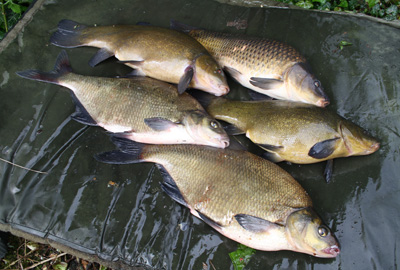 As I gazed at this dark warrior of a common, I wondered if it had ever been caught before. At a little under 20lb it was exactly what fishing is all about to me –each and every river carp I catch is precious. Most of you reading this will probably cringe and disagree but given the choice of a 40lb fish that visits the bank on several occasions each year and likes the look of an unhooking mat and a piece of plastic corn tipped on a boilie – well I know which I would rather catch!
As I gazed at this dark warrior of a common, I wondered if it had ever been caught before. At a little under 20lb it was exactly what fishing is all about to me –each and every river carp I catch is precious. Most of you reading this will probably cringe and disagree but given the choice of a 40lb fish that visits the bank on several occasions each year and likes the look of an unhooking mat and a piece of plastic corn tipped on a boilie – well I know which I would rather catch!
So why do I elect to turn my back on the chance of 40 and 50lb carp from the rat race of circuit waters in pursuit of ‘much less significant carp’?
I suppose for me it’s a multitude of reasons mainly made up of the quieter banks, beautiful surroundings, the changing river environment and, of course, that underlying fact that I really have no idea what the river may contain and the true potential it may hold. You only have to look at some of the big rivers that spread across Europe to see the possible BIG fish potential of running water – fish to over 30kg have been landed and although I can’t envisage fish of that size being landed anytime soon from our own rivers, it’s places like the River Thames where this may one day be a reality!
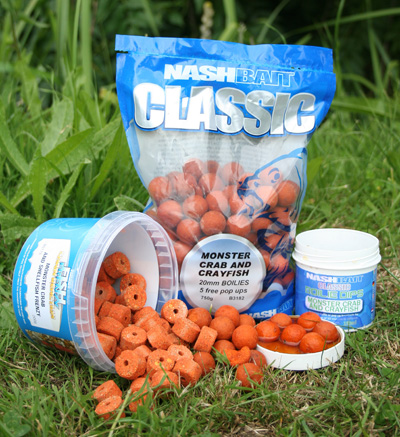 I think the first port of call when deciding to have a go for some nomadic river carp is selecting the right venue. I truly admire the dedicated big fish angler who sets his stall out for the largest of fish (which in turn usually means low stock levels and long waits between captures) but that just isn’t me at my current point in life. I feel I have so much to understand and learn about carp and the only way you can do that is by catching regularly and the river fish, because they are not under the same pressure as the carp in our circuit waters, act naturally.
I think the first port of call when deciding to have a go for some nomadic river carp is selecting the right venue. I truly admire the dedicated big fish angler who sets his stall out for the largest of fish (which in turn usually means low stock levels and long waits between captures) but that just isn’t me at my current point in life. I feel I have so much to understand and learn about carp and the only way you can do that is by catching regularly and the river fish, because they are not under the same pressure as the carp in our circuit waters, act naturally.
I always select my venue with prior information that there is a good head of fish present and this is usually obtained by speaking with local tackle shops or a match team that may fish the venue – if they keep getting smashed up in competitions then there’s usually one culprit for their misfortune – Mr Carp.
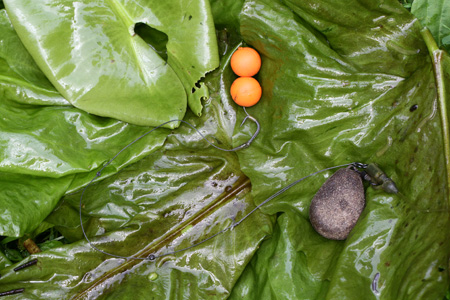 Once I’ve selected the venue I will then dedicate as much time as possible to walk the stretch and locate where the carp are happy to be. Where do they go at night? What are their main feeding spots? And where do they hide up when the pressure may become too much from the likes of boats, dogs, walkers etc? I suppose actually locating the fish is no different to stillwater carp – you know, the usual features like shallow or deep areas, weed, snags and overhangs, silty troughs and gravel bars but rivers also have the added addition of some very unique holding areas like marinas, bridges, bends and of course boats – all of which, at some point or another, attract carp.
Once I’ve selected the venue I will then dedicate as much time as possible to walk the stretch and locate where the carp are happy to be. Where do they go at night? What are their main feeding spots? And where do they hide up when the pressure may become too much from the likes of boats, dogs, walkers etc? I suppose actually locating the fish is no different to stillwater carp – you know, the usual features like shallow or deep areas, weed, snags and overhangs, silty troughs and gravel bars but rivers also have the added addition of some very unique holding areas like marinas, bridges, bends and of course boats – all of which, at some point or another, attract carp.
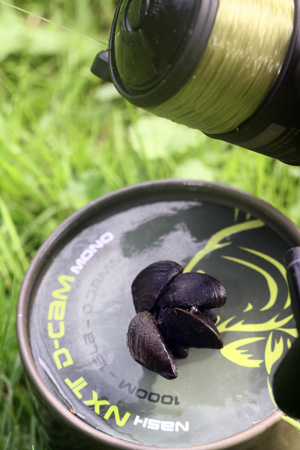 Once I have located carp there is often an element of swim preparation required but for me this is just all part of the fun. Fishing for carp in our rivers and canals can often involve a certain amount of pioneering and the banks, instead of being well trodden and bare of grass, may in fact not even have swims, they are often a jungle of undergrowth. It maybe that the water is inaccessible and a swim needs to be created or possibly the margins need to be raked and cleared in order to present baits properly. It’s also worth keeping your options open and I will more often than not have two or three possible spots I can drop onto depending on where the fish are on a particular day – remember these fish can travel long distances, both up or downstream.
Once I have located carp there is often an element of swim preparation required but for me this is just all part of the fun. Fishing for carp in our rivers and canals can often involve a certain amount of pioneering and the banks, instead of being well trodden and bare of grass, may in fact not even have swims, they are often a jungle of undergrowth. It maybe that the water is inaccessible and a swim needs to be created or possibly the margins need to be raked and cleared in order to present baits properly. It’s also worth keeping your options open and I will more often than not have two or three possible spots I can drop onto depending on where the fish are on a particular day – remember these fish can travel long distances, both up or downstream.
Once I have a picture of their habits it’s then a case of establishing a bait. Most rivers are rarely fished by carp anglers so things like boilies, particles, nuts and tigers may not be recognised initially by the carp as food. That said, they will have probably seen their fair share of groundbait, maggots and corn so to kick start my baiting campaign I usually prime the areas with said baits, along with some boilies – worst case, if the carp don’t get there before the nuisance fish then at least my spots have had a good polish.
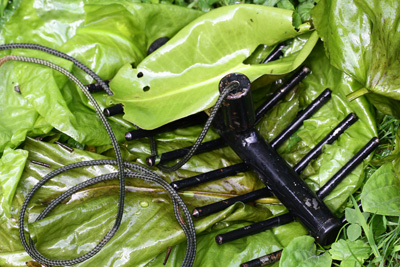 In the hope that I have attracted the attention of the carp, I then start to apply boilies properly, visiting the venue on a regular basis to top up the swim. I think unless you have found an area where carp are resident, for example a marina, river carping is about regular baiting. As I mentioned, the carp may travel long distances, they come along like buses; but can be just as infrequent! So the trick is to ensure that there is always bait on your spot so that when one comes along it hangs around. As with any baiting campaign – most good quality boilies should eventually work however for instant attraction, regarding both flavour and visual, I always opt for Nash Baits Classic Shelf Lifes; either Scopex or Monster Crab and Crayfish – The later for the warmer months and the Scopex for when the water temperature starts to drop away.
In the hope that I have attracted the attention of the carp, I then start to apply boilies properly, visiting the venue on a regular basis to top up the swim. I think unless you have found an area where carp are resident, for example a marina, river carping is about regular baiting. As I mentioned, the carp may travel long distances, they come along like buses; but can be just as infrequent! So the trick is to ensure that there is always bait on your spot so that when one comes along it hangs around. As with any baiting campaign – most good quality boilies should eventually work however for instant attraction, regarding both flavour and visual, I always opt for Nash Baits Classic Shelf Lifes; either Scopex or Monster Crab and Crayfish – The later for the warmer months and the Scopex for when the water temperature starts to drop away.
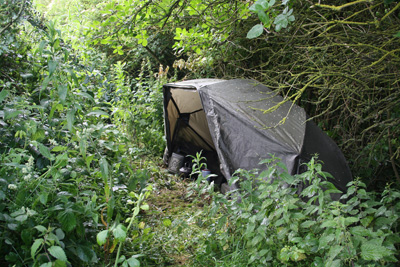 I’m a strong believer in straight out of the bag shelf life baits due to the higher flavour leakage and brighter than normal colour – both of which are, in my opinion, essential for maximum success with this style of fishing. I mentioned nuisance fish and shoals of hungry bream and tench can be a big problem on both rivers and canals. I have failed in the past because I didn’t take this into consideration. There is no point spending time and money baiting unless the carp can get to your bait, so forget about soft or 10 – 15mm boilies – instead, give them gobstoppers of 20mm and feed tiger nuts which are more or less bream proof. That way you have made your best efforts to ensure that there is bait in the swim for when that dirty great double decker bus finally comes along!
I’m a strong believer in straight out of the bag shelf life baits due to the higher flavour leakage and brighter than normal colour – both of which are, in my opinion, essential for maximum success with this style of fishing. I mentioned nuisance fish and shoals of hungry bream and tench can be a big problem on both rivers and canals. I have failed in the past because I didn’t take this into consideration. There is no point spending time and money baiting unless the carp can get to your bait, so forget about soft or 10 – 15mm boilies – instead, give them gobstoppers of 20mm and feed tiger nuts which are more or less bream proof. That way you have made your best efforts to ensure that there is bait in the swim for when that dirty great double decker bus finally comes along!
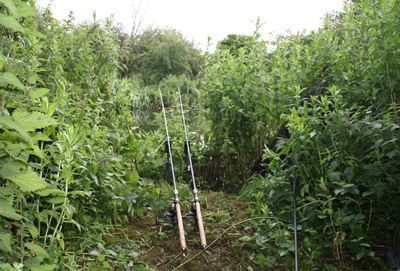 Tackle is kept nice and simple with my two main focuses being travelling light to the swims and ensuring that my tackle is strong and reliable. The first point will usually mean that I have a small barrow (if the banks permit), Indulgence Sleep System, oval brolly, rucksack, unhooking mat and my rods. The only main difference to my usual gear is my rods as for this sort of fishing 12ft rods can be a positive disadvantage – this is more like jungle warfare. In my experience short 9ft rods are a dream to use and much more practical than the 12ft ones. With my 9ft rods I can cast far more accurately to the far bank margins, play and land fish with ease and also 9ft rods are far more compact to carry as well as more discrete when just poking over the water’s edge. I do have to say here that I am being converted to 9ft rods for most of my stillwater fishing too!
Tackle is kept nice and simple with my two main focuses being travelling light to the swims and ensuring that my tackle is strong and reliable. The first point will usually mean that I have a small barrow (if the banks permit), Indulgence Sleep System, oval brolly, rucksack, unhooking mat and my rods. The only main difference to my usual gear is my rods as for this sort of fishing 12ft rods can be a positive disadvantage – this is more like jungle warfare. In my experience short 9ft rods are a dream to use and much more practical than the 12ft ones. With my 9ft rods I can cast far more accurately to the far bank margins, play and land fish with ease and also 9ft rods are far more compact to carry as well as more discrete when just poking over the water’s edge. I do have to say here that I am being converted to 9ft rods for most of my stillwater fishing too!
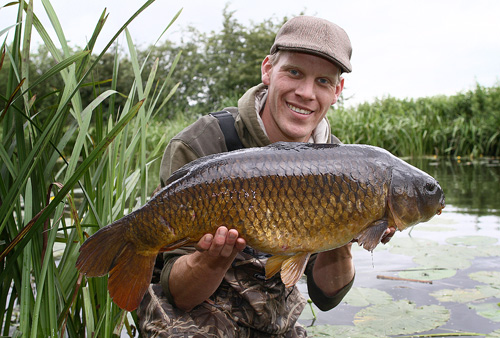 With the very great likelihood of marginal snags and heavy beds of lilies and cabbages, a strong, super abrasion resistant main line is essential and my choice is always Nash 15lb NXT D-Cam mono. I want to drop the lead on the take so a Weed Safety Bolt Bead is the order of the day, 3oz of lead to set the hook and an Armourlink hooklink of approximately 12 inches (depending on riverbed) with an ever faithful Twister hook on a blow back rig – Sorry Mr Carp – but if you pick up my rig we’re both going to smile for the camera.
With the very great likelihood of marginal snags and heavy beds of lilies and cabbages, a strong, super abrasion resistant main line is essential and my choice is always Nash 15lb NXT D-Cam mono. I want to drop the lead on the take so a Weed Safety Bolt Bead is the order of the day, 3oz of lead to set the hook and an Armourlink hooklink of approximately 12 inches (depending on riverbed) with an ever faithful Twister hook on a blow back rig – Sorry Mr Carp – but if you pick up my rig we’re both going to smile for the camera.
Carp are carp and river and canal carp are no different so if you’re getting fed up with turning up at your local lake for all the good swims to be taken, or the ‘big one’ just been out, then I suggest you have a look at your local river. The only problem you might feel is loneliness as you won’t see another angler for miles!













